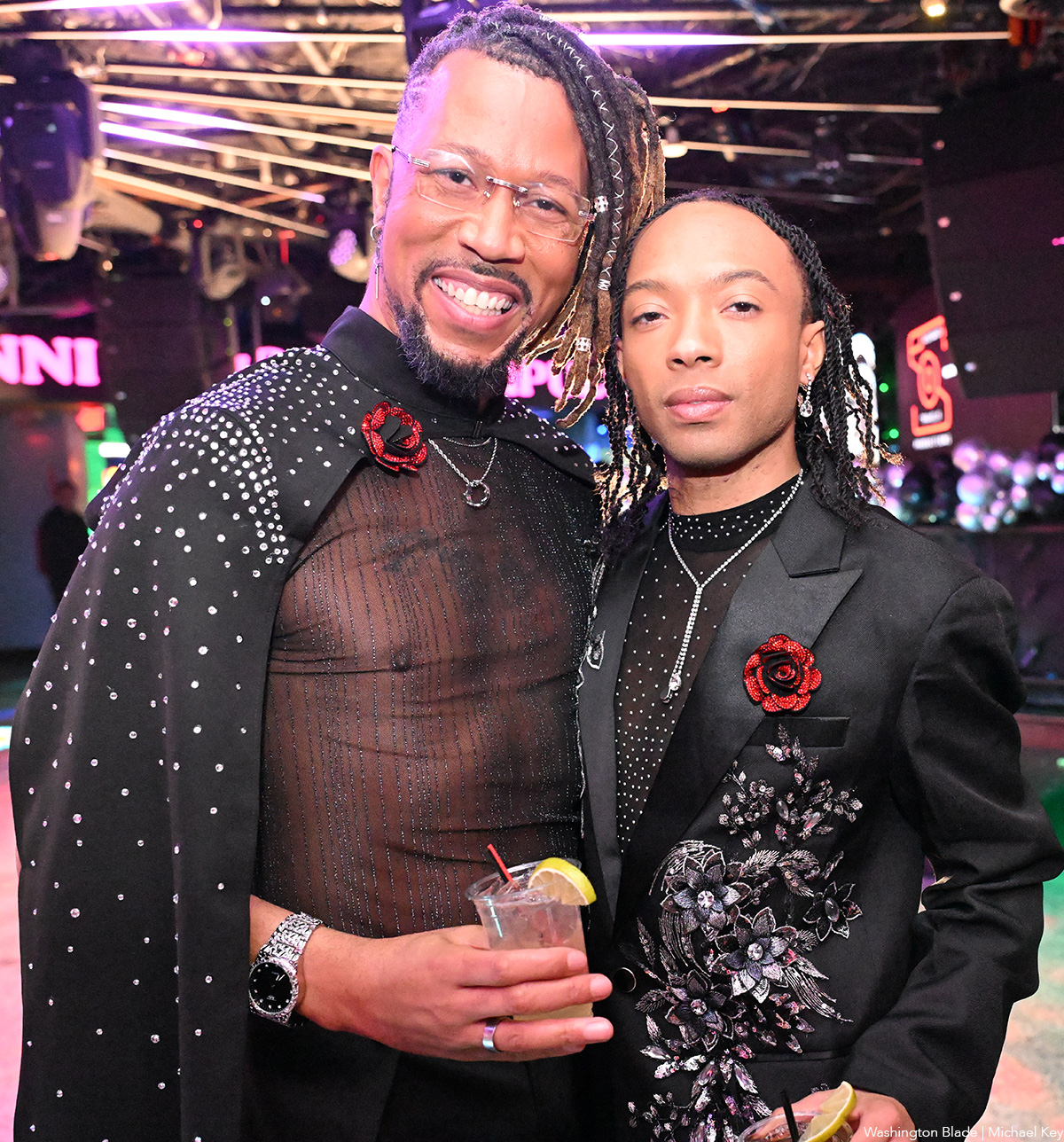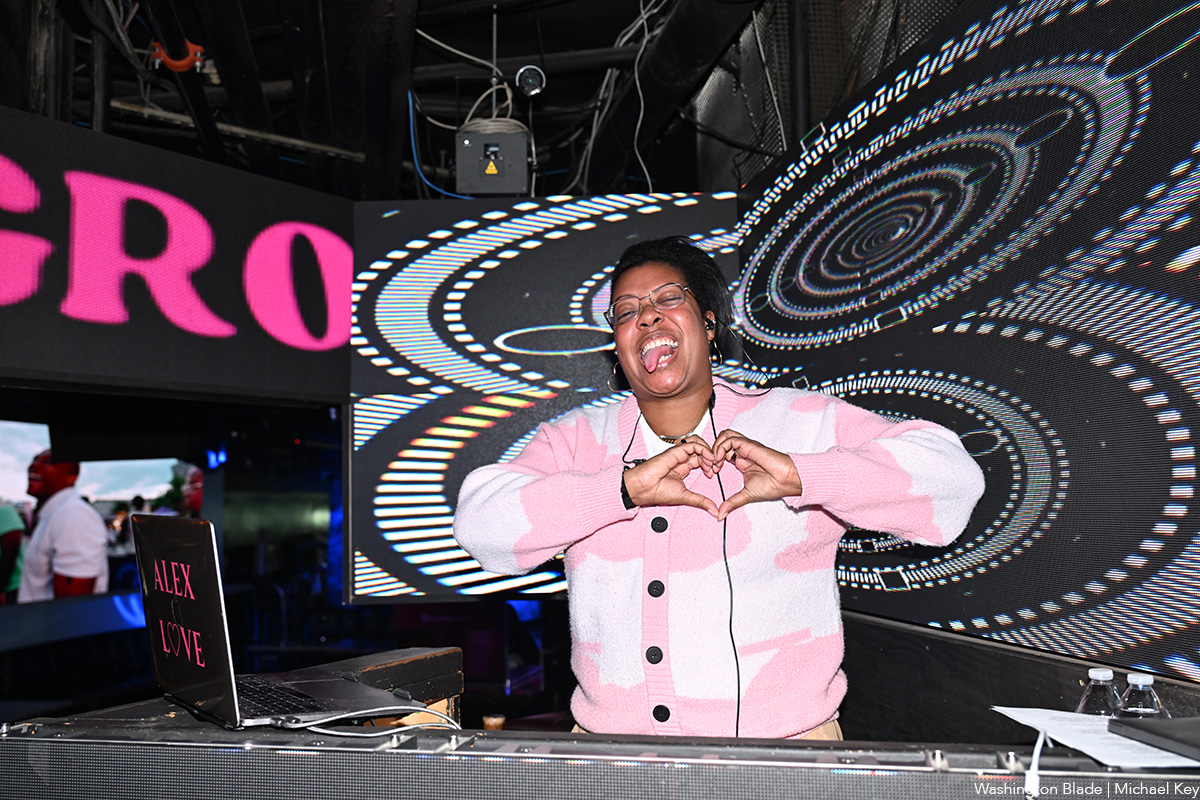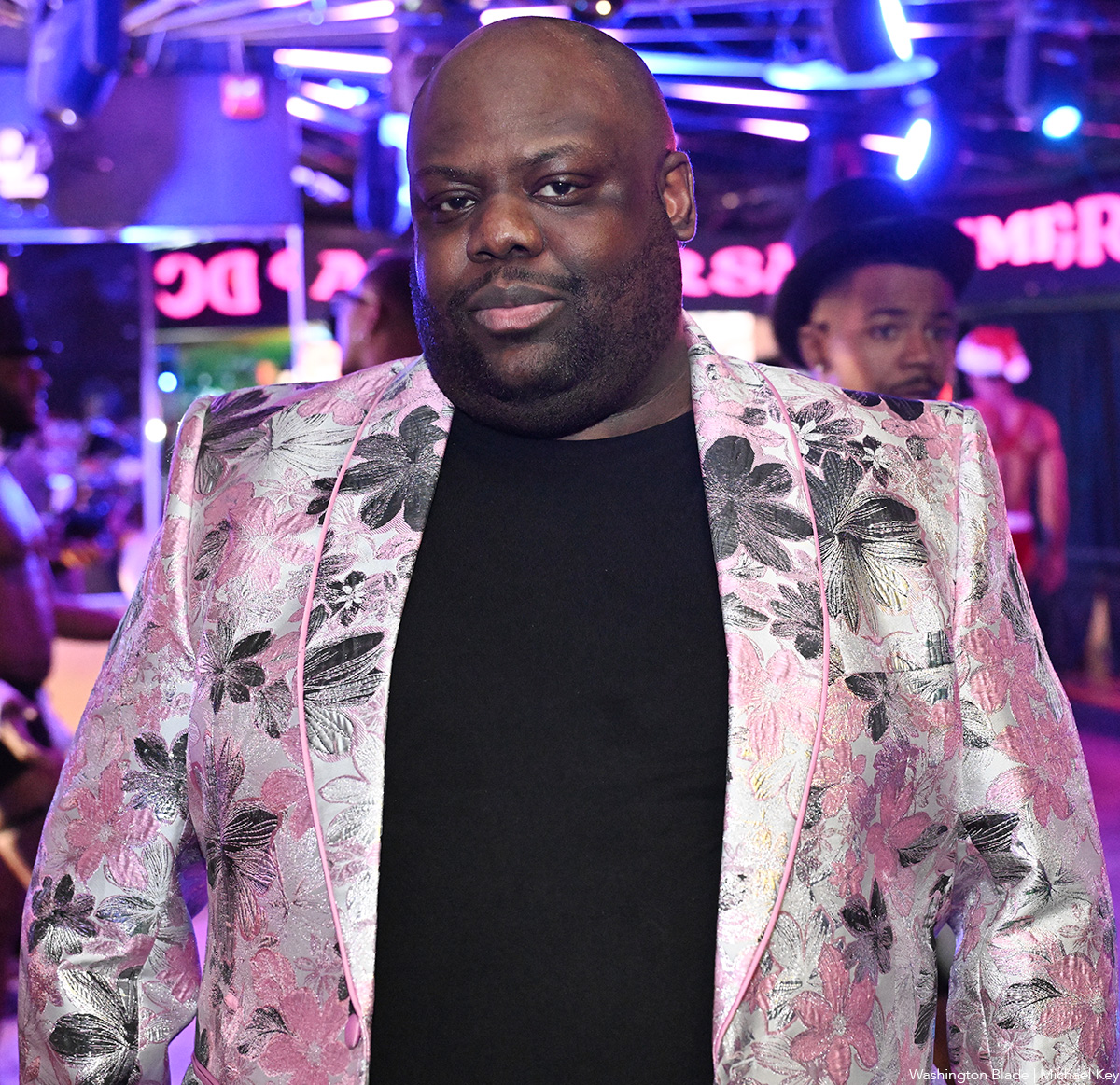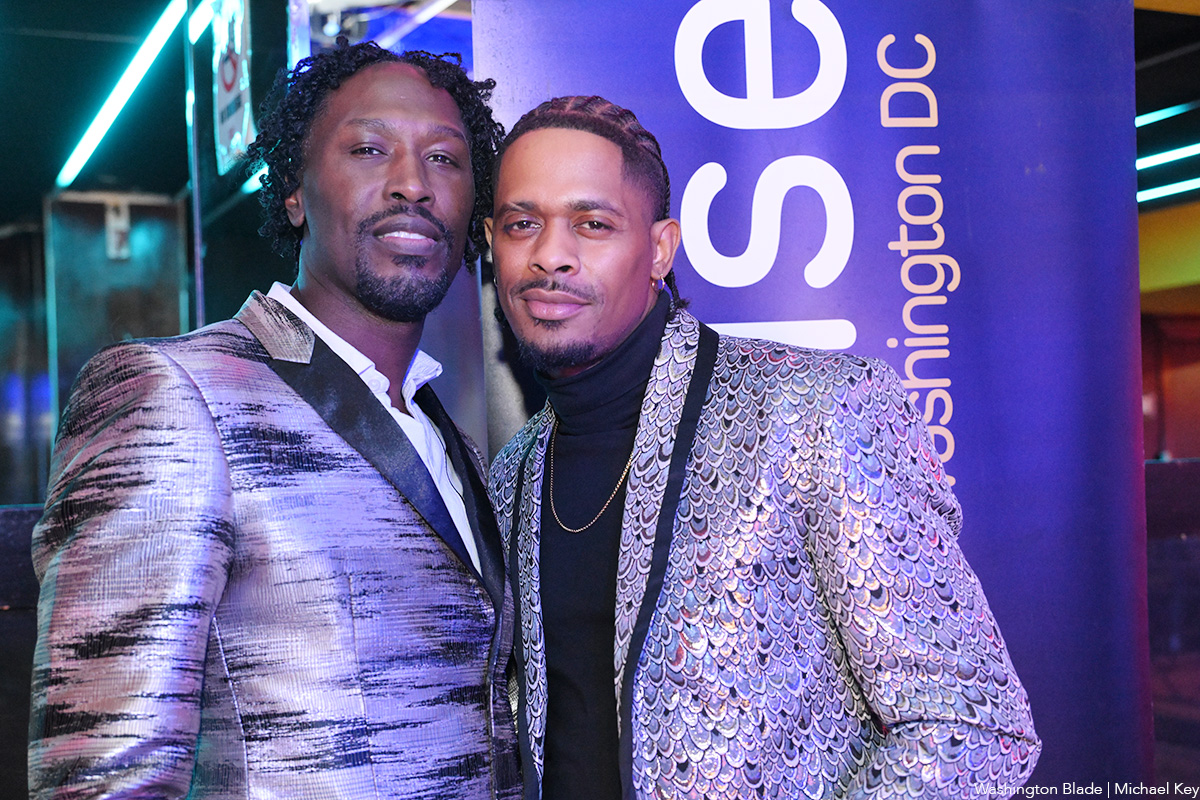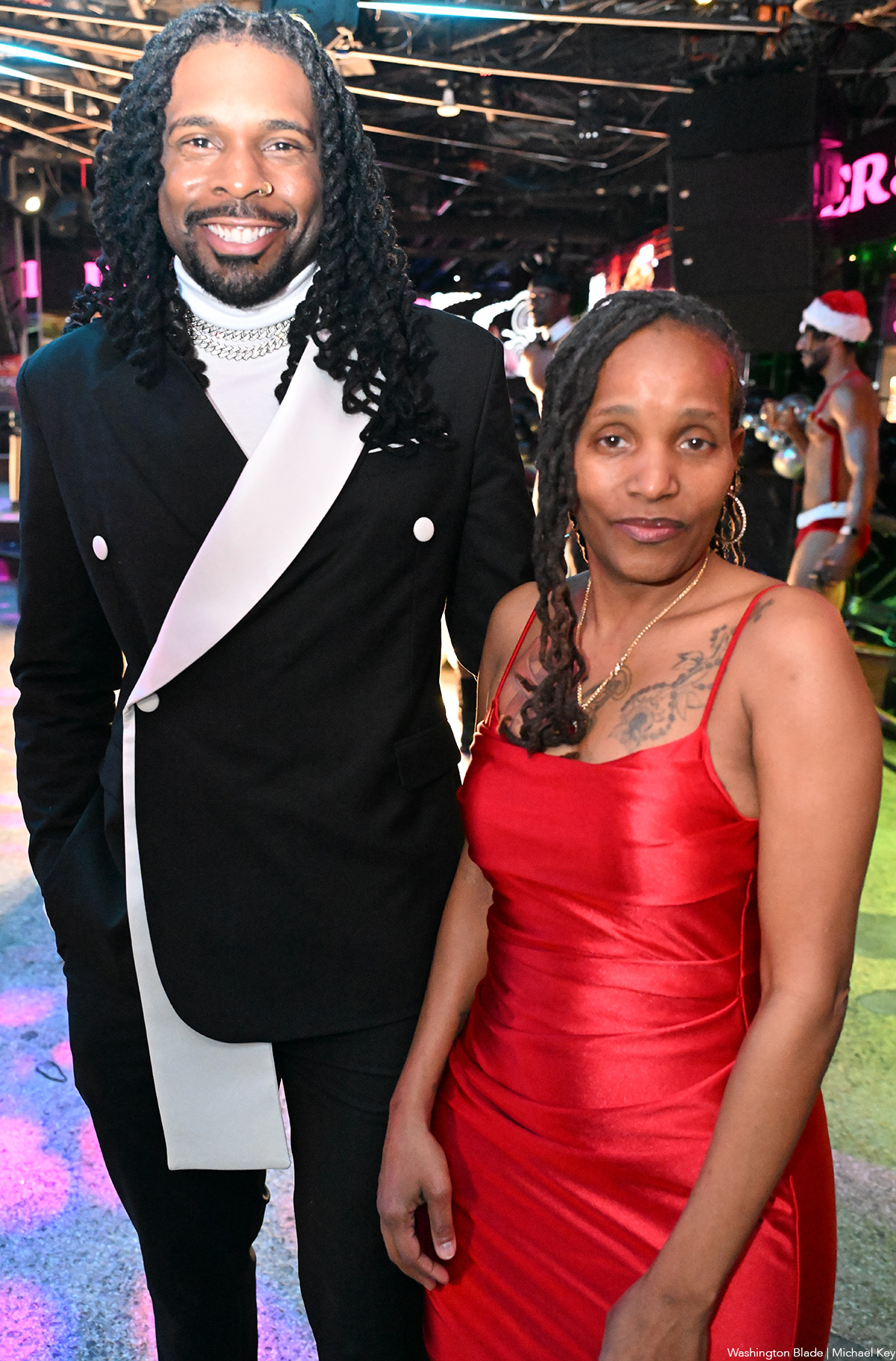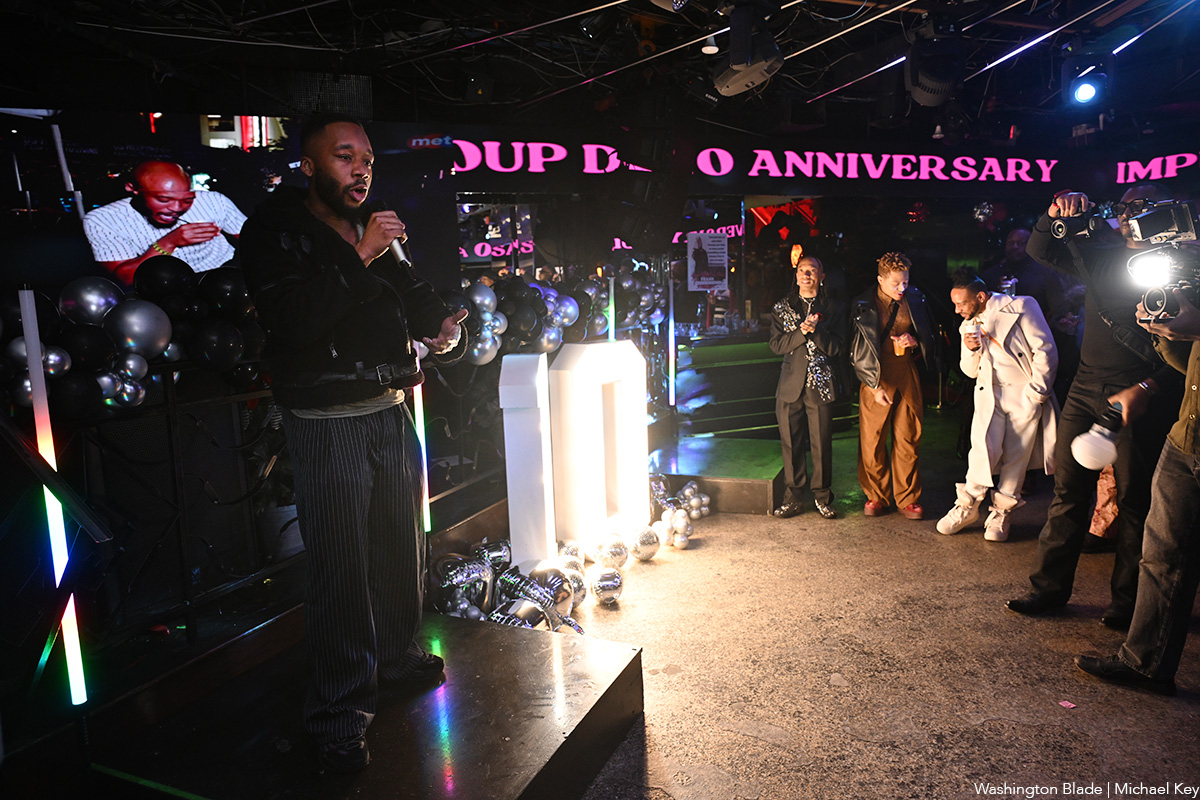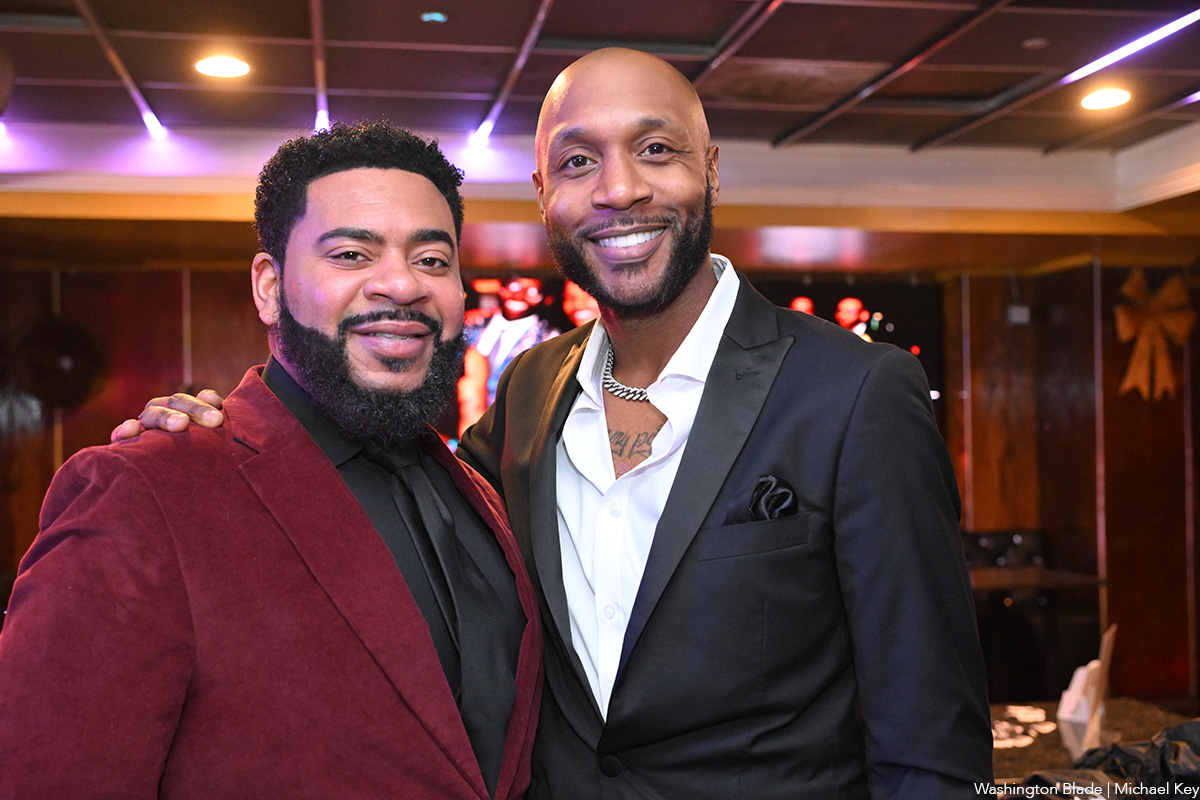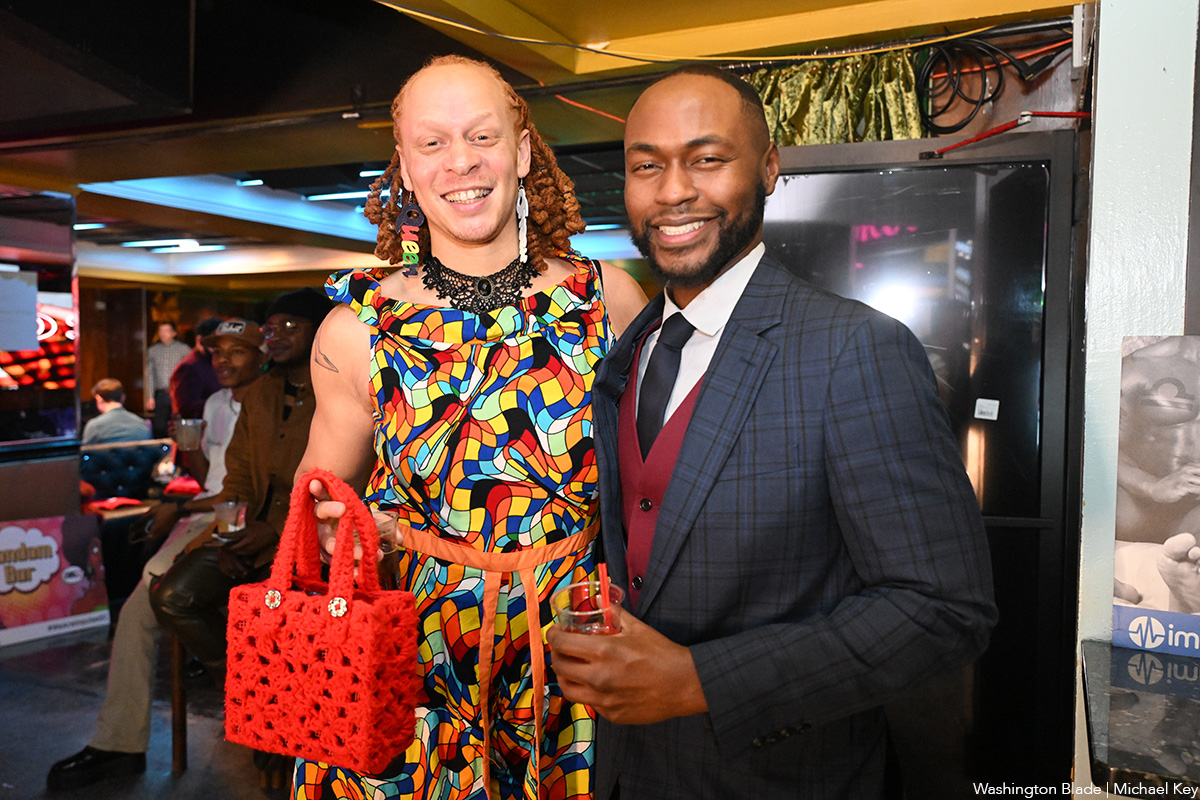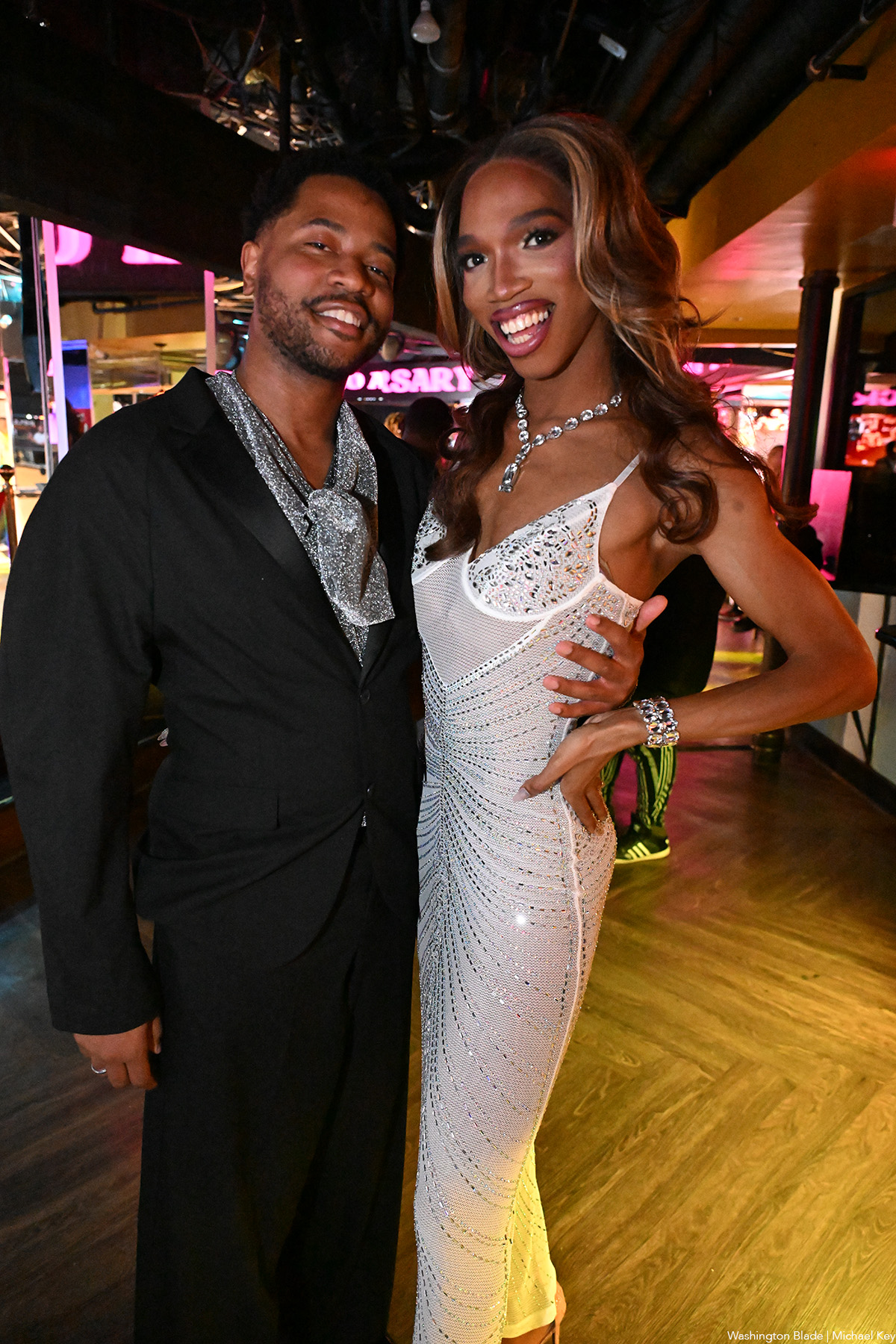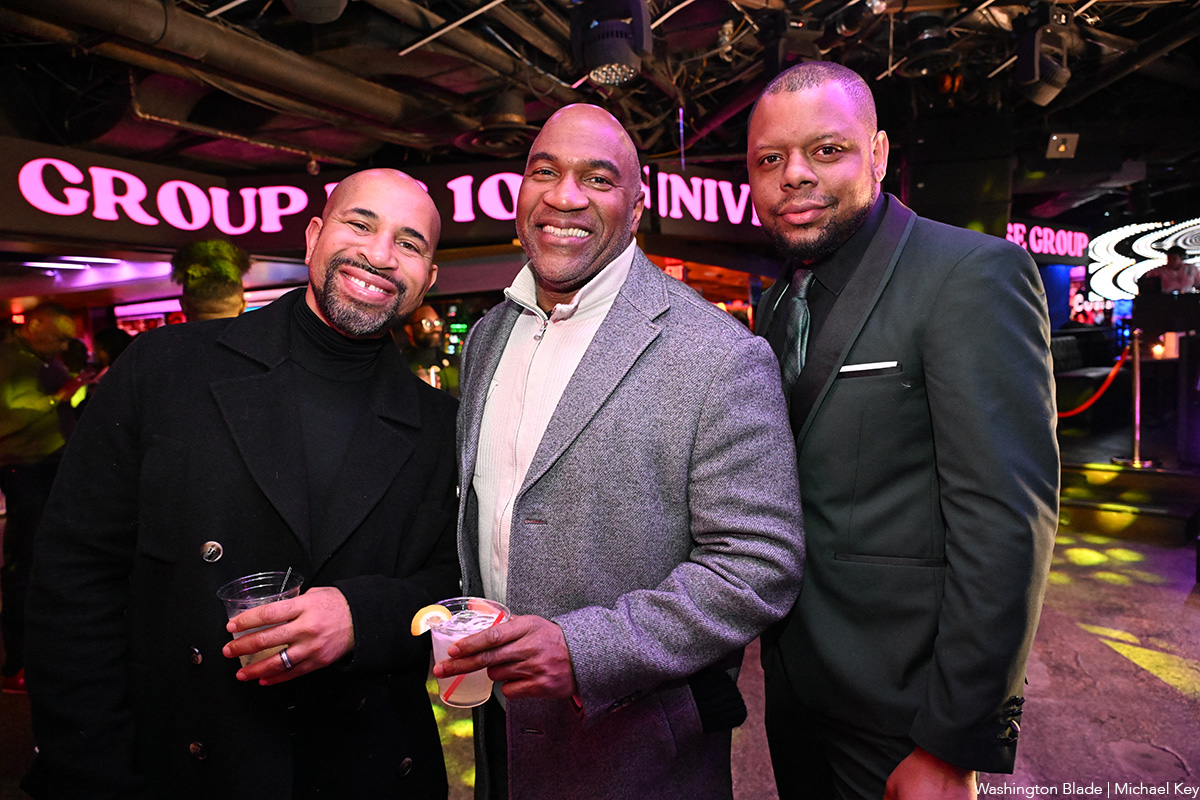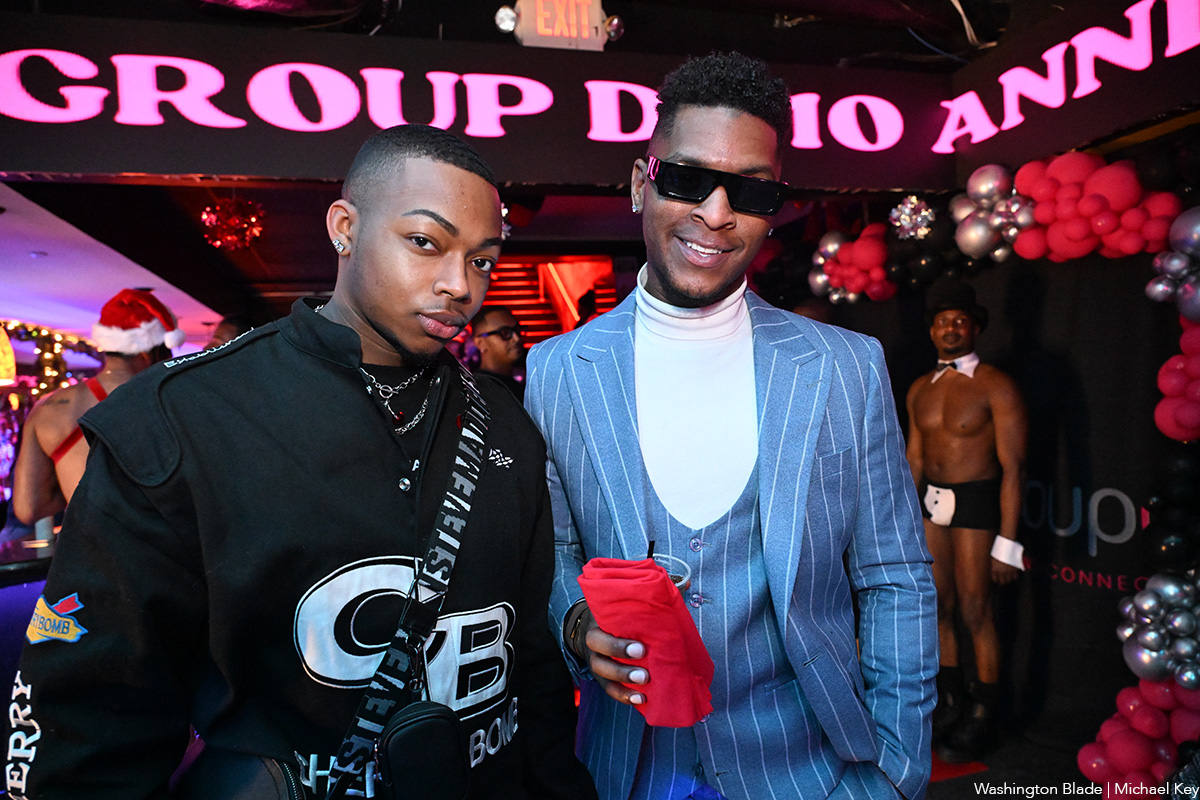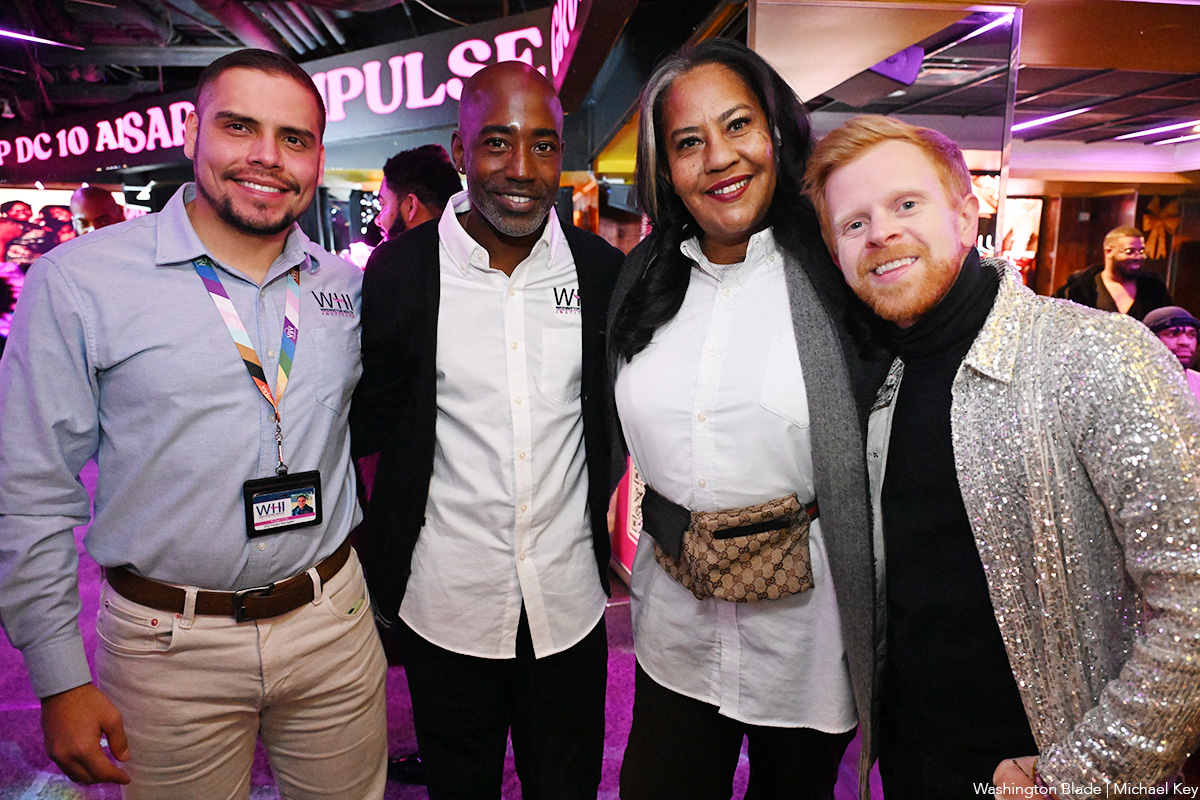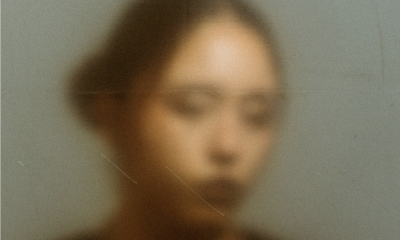Arts & Entertainment
Calendar for July 16
Friday, July 16, to Thursday, July 22

Friday, July 16
Gay District, a weekly, non-church affiliated discussion and social group for GBTQ men between 18 and 35, meets tonight from 8:30-10:30 p.m. at St. Margaret’s Episcopal Church, 1820 Connecticut Ave., N.W. For more information, e-mail [email protected].
Queer Pulp For the Girls and Bois at Black Squirrel, 2427 18th St., N.W., is tonight at 9. No cover charge, 21 and over to enter.
Kylie Minogue CD Release Party tonight at Ultrabar, 911 F St., N.W. at 9 p.m. Minogue returns with her highly anticipated new album. There will be giveaways including CDs, posters, vouchers and more. 18 and over to enter. Visit popnightlife.com for more information.
DC Cowboys present “Brodeo” tonight at Remington’s, 639 Pennsylvania Ave., S.E., from 10 p.m. to 1 a.m. There will be country/western and disco/club music, live performances, giveaways, Jell-O shots, an auction and lots of sexy Cowboys.
Experience Silver Starr Art Studios LLC’s Ninth Annual Exhibition featuring Fred Budin’s Flag Series and Jay Hayden’s live R&B melodies at L’Eclat de Verre, 3336 M St., N.W. at 7 p.m. There is a suggested donation of $5, benefiting WVSA Arts Connection.
Saturday, July 17
Charity Cornhole Tournament at Nellie’s Sports Bar, 900 U St., N.W., at 1 p.m. 75 percent of the proceeds will benefit the “Remembering Nikki Yoder” scholarship at Montrose High School in Montrose, Pa. You can pre-register by e-mailing [email protected] and include team name, participant names, and contact phone. Registration is $25 for a team or $15 for individuals. There will be cash prizes, door prizes and drink specials.
Join Burgundy Crescent Volunteers as they prune the sucker branches of the National Cherry Trees around the Tidal Basin from 9 to 11 a.m. Volunteers will meet at the Tidal Basin parking lot. For the fifth year in a row, BCV has been asked by the National Park Service to return to the Jefferson Memorial Tidal Basin for the annual Cherry Tree Pruning activity. Fifteen volunteers are needed for each shift.
Star Wars: In Concert, the unique multimedia event featuring music from all six of John Williams’ epic Star Wars scores, plays at the Verizon Center at 2 p.m. and 7 p.m. Tickets are $35, $55 and $75 and can be purchased at ticketmaster.com. With live narration by Anthony Daniels (C-3PO), the production features a full symphony orchestra and choir, accompanied by specially edited footage from the films displayed on a three-story-tall, high-definition LED super-screen.
Wolf Trap presents An Evening with Idina Menzel and Marvin Hamlisch at the Filene Center at 8:15 p.m. Menzel—the Tony Award-winning “Elphaba” from Wicked—joins award-winning composer Marvin Hamlisch for a one-night-only special engagement with the National Symphony Orchestra. Repertoire will include songs from Rent, Wicked, and Idina Menzel’s new album I Stand. Tickets range from $20 to $52 and can be purchased at wolftrap.org.
REMIX & A2Z Events present Al Sura’s 2010 White Attire Affair, “The Garden of Envy” at Longview Gallery, 1234 9th St., N.W., from 7 p.m. to 1 a.m. VIP tickets are $125 and include a VIP reception with an open bar, live entertainment by Tamika Jones, and entrance to the official after-party. General admission is $75 and includes an open bar, live entertainment by Bry’NT, and discounted entrance to the official after party.
DJ Hector Fonseca spins at Town, 2009 8th St., N.W. Fonseca holds residencies at some of the most popular venues worldwide, and recently released two new music compilations. Doors open at 10 p.m. A drag show starts at 10:30 p.m. There will be music and videos downstairs by Wess. $8 cover before 11 p.m. and $12 after. 21 and over to enter.
Sunday, July 18
Ladies Kickball on the Mall at 3 p.m. between the National Museum of History and Smithsonian Castle. Join Zoom as they play kickball on the mall. Even if you don’t play you’re welcome to come and watch the fun from the sidelines; look for the purple balloons to locate the group. In case of inclement weather the event will be rescheduled for the following Sunday at the same time.
Monday, July 19
The GLB Youth Support Group will meet at the GW Center Clinic, 1922 F St., N.W., Suite 103, at 4:30 p.m.
Tuesday, July 20
Vans Warped Tour at Merriweather Post Pavilion starting at 11 a.m. featuring Reel Big Fish, Face to Face, Pennywise, Alkaline Trio, Andrew W.K, We the Kings, and many more. Vans Warped Tour is a “punk rock summer camp” on wheels where music, athletes and lifestyles co-mingle and thrive in an atmosphere dedicated to music fans of punk, alternative, hip-hop, ska, pop punk, electronica, alternative rock, emo, hardcore and more. Tickets are $32.75 until the day of the show when they go up to $40. Visit merriweathermusic.com for more information and to purchase tickets.
Join Burgundy Crescent Volunteers to help pack safer sex kits tonight from 7-9 p.m. at EFN Lounge, on 9th Street between O and N streets.
Wednesday, July 21
Yappy Hour: Happy Hour for Dogs at Larry’s Lounge, 1836 18th St., N.W., is today from 4 to 8 p.m. featuring drink specials and giveaways.
DC Gurly Show at Phase 1, 525 8th St., S.E., at 10 p.m. Drink specials will include $3 PBR and $4 Jager shots. There is a $5 cover.
Thursday, July 22
Atlas Performing Arts Center presents Summer Film Series: Gay 101 showing 1967’s “Valley of the Dolls” starring Barbara Parkins and Patty Duke at the Paul Sprenger Theatre, 1333 H St., N.E., at 8 p.m. Buy tickets at atlasarts.org or at the box office one hour prior to the movie.
Books
‘Dogs of Venice’ looks at love lost and rediscovered
A solo holiday trip to Italy takes unexpected turn
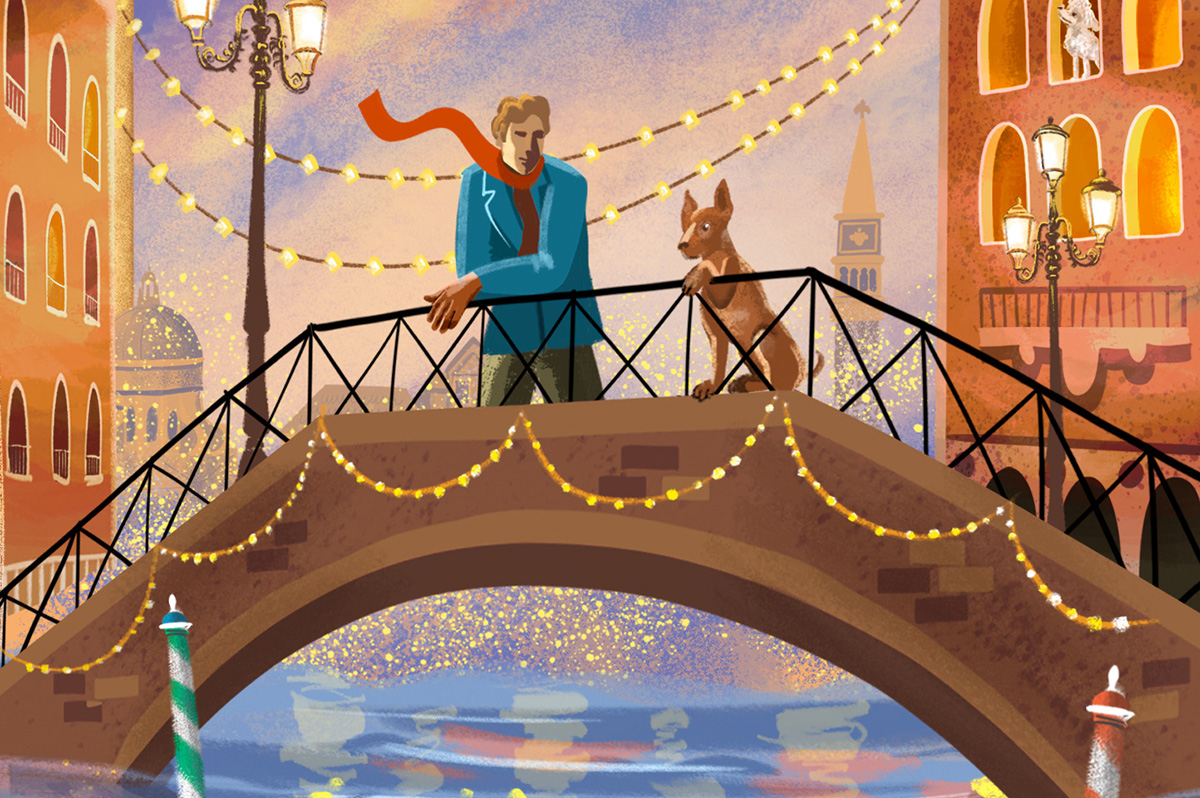
‘The Dogs of Venice’
By Steven Crowley
c.2025, G.P. Putnam & Sons
$20/65 pages
One person.
Two, 12, 20, you can still feel alone in a crowded room if it’s a place you don’t want to be. People say, though, that that’s no way to do the holidays; you’re supposed to Make Merry, even when your heart’s not in it. You’re supposed to feel happy, no matter what – even when, as in “The Dogs of Venice” by Steven Rowley, the Christmas tinsel seems tarnished.

Right up until the plane door closed, Paul held hope that Darren would decide to come on the vacation they’d planned for and saved for, for months.
Alas, Darren was a no-show, which was not really a surprise. Three weeks before the departure, he’d announced that their marriage wasn’t working for him anymore, and that he wanted a divorce. Paul had said he was going on the vacation anyhow. Why waste a perfectly good flight, or an already-booked B&B? He was going to Venice.
Darren just rolled his eyes.
Was that a metaphor for their entire marriage? Darren had always accused Paul of wanting too much. He indicated now that he felt stifled. Still, Darren’s unhappiness hit Paul broadside and so there was Paul, alone in a romantic Italian city, fighting with an espresso machine in a loft owned by someone who looked like a frozen-food spokeswoman.
He couldn’t speak or understand Italian very well. He didn’t know his way around, and he got lost often. But he felt anchored by a dog.
The dog – he liked to call it his dog – was a random stray, like so many others wandering around Venice unleashed, but this dog’s confidence and insouciant manner inspired Paul. If a dog could be like that, well, why couldn’t he?
He knew he wasn’t unlovable but solo holidays stunk and he hated his situation. Maybe the dog had a lesson to teach him: could you live a wonderful life without someone to watch out for, pet, and care for you?
Pick up “The Dogs of Venice,” and you might think to yourself that it won’t take long to read. At under 100 pages, you’d be right – which just gives you time to turn around and read it again. Because you’ll want to.
In the same way that you poke your tongue at a sore tooth, author Steven Rowley makes you want to remember what it’s like to be the victim of a dead romance. You can do it here safely because you simply know that Paul is too nice for it to last too long. No spoilers, though, except to say that this novel is about love – gone, resurrected, misdirected – and it unfolds in exactly the way you hope it will. All in a neat evening’s worth of reading. Perfect.
One thing to note: the Christmas setting is incidental and could just as well be any season, which means that this book is timely, no matter when you want it. So grab “The Dogs of Venice,” enjoy it twice with your book group, with your love, or read it alone.
The Blade may receive commissions from qualifying purchases made via this post.
a&e features
Local, last-minute holiday gift ideas
Celebrate the season while supporting area businesses

The DowntownDC Holiday Market is bustling. Union Station is decked out with its annual Christmas tree. Washingtonians have wrapped their houses and apartment balconies with festive lights and holiday decorations. The holiday season is here. And with stockings to fill and empty space under the tree, Washington’s local shops and artists have plenty to offer.
Show your LGBTQ and D.C. pride with the Washington Blade’s annual holiday gift guide.
To embrace the holiday buzz: The Blanco Nwèl cocktail from Alchy Cocktails. This Caribbean eggnog is one of Alchy Cocktail’s seasonal holiday cocktails. The flavor profile is similar to coquito, a traditional Puerto Rican Christmas drink with a coconut base. As a queer and Caribbean-owned business, Alchy Cocktails has been based out of Washington since 2021. Blanco Nwèl is available in both cocktail ($24) and mocktail ($12) online and at a variety of holiday markets, including the Tingey Plaza Holiday Market, the Flea Market at Eastern Market, Union Station’s Main Hall Holiday Market, and more. ($24)

A spicy bite: Gordy’s Cajun Okra from Salt and Sundry. These spicy, tangy pickles pull on Southern Cajun-style flavors, packing a punch with paprika, cayenne, and more. Gordy’s is an LGBTQ-owned and Washington-based brand, making this gift an opportunity to support a local LGBTQ business straight from the jar. This pantry staple is available on Salt & Sundry’s website and at its locations in Union Market, Logan Circle, and its Georgetown holiday pop-up store. ($14)


To celebrate Washington pride: The DC Landmark Tote Bag from The Neighborgoods. Native Washingtonians, visitors, friends and family alike will find something to love about this Washington-themed tote bag. Food trucks, the 9:30 Club, the Metro logo and pandas from the National Zoo are just some of the city’s landmarks depicted across the tote in a red, white, and blue color palette. The tote is a part of the DC Landmarks collection, which donates 10 percent of its sales to the American Civil Liberties Union. The Neighborgoods itself is a local, woman-owned business built out of a passion for screen-printing in 2013. The 100 percent cotton canvas tote is for sale online or at the DowntownDC Holiday Market. ($22)
To give friends and family their flowers: The Flowers Bandana from All Very Goods. This 100 percent cotton bandana was designed in Washington and hand printed in India. Its uniqueness comes in being covered with the faces of Black women, representing a “love letter to all women but especially Black women,” according to All Very Goods. The Black woman-owned and operated business, based out of Northwest Washington, has a mission to celebrate diversity and representation through its products. The bandana intends to give Black women their “flowers.” The Flowers bandana is available for purchase online. ($24)
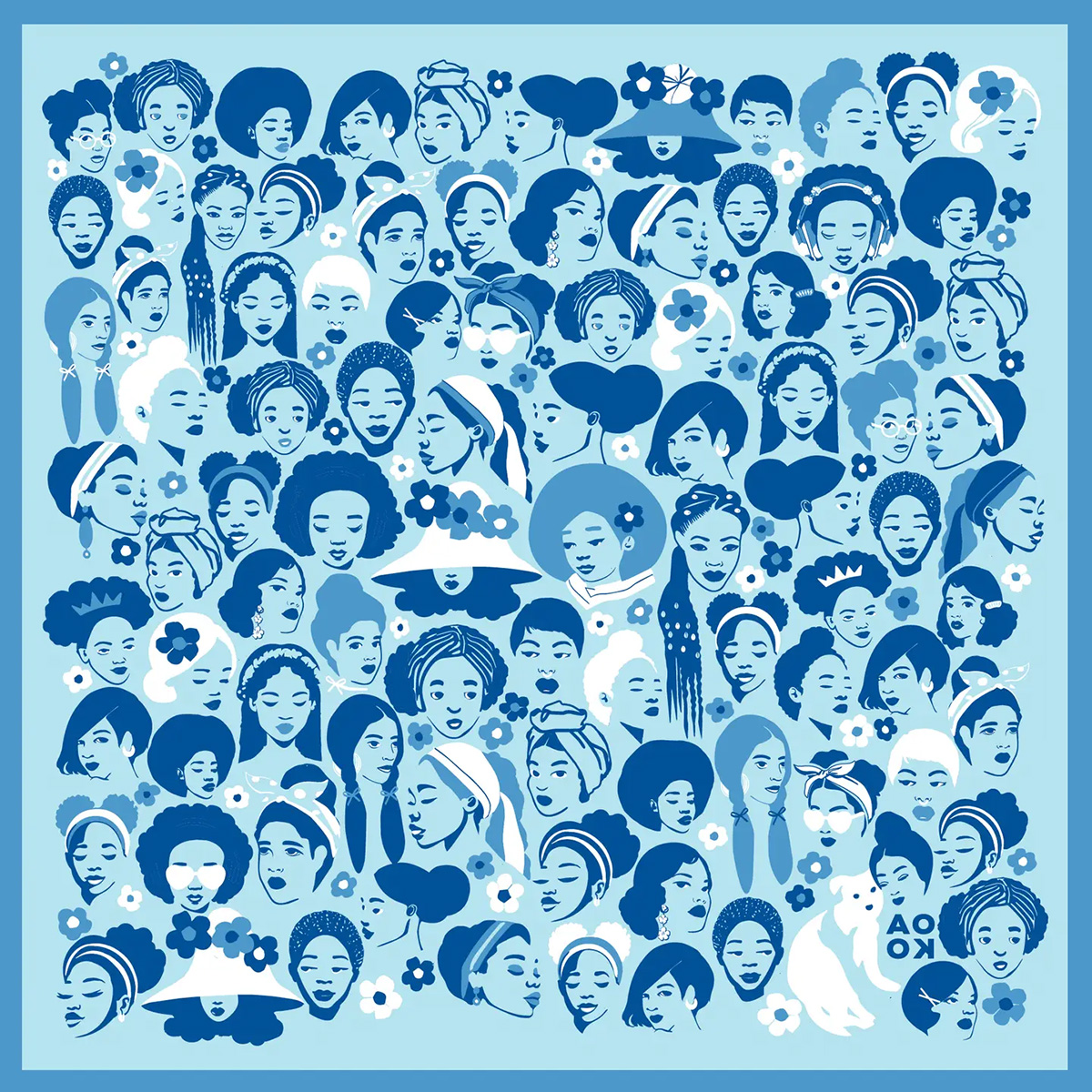
To unlock culinary creativity: The Curious Chef Gift Collection from Each Peach Market. This customizable collection of kitchen oddities — ranging from tinned fish to chili oil — is a quirky gift for the most inventive chefs. The collection is available in a Standard Santa, Extra Goodies and Super Holiday Size for up to $165. The Washington-based market, founded in 2013, permits customers to make the collection special by specifying what unique ingredients are packaged, including products made by local or LGBTQ brands. Each Peach Market offers assembly and pick up in-person at its Mount Pleasant shop and also offers local delivery and nationwide shipping via its website. ($85)

To give a touch of sweetness: The DC Landmark Chocolate Covered Oreo Holiday Cookies from Capital Candy Jar. Wrapped in a festive red bow, this box of nine cookies embraces love for Washington and the holiday season in one. Among the dark and milk chocolate covered cookies are images of the U.S. Capitol, the White House, the Lincoln Memorial, the Jefferson Memorial and festive hollies. The treat, packaged in a Hill East facility just a few blocks from the Capitol, is available for purchase online and at the DowntownDC Holiday Market. ($23.95)

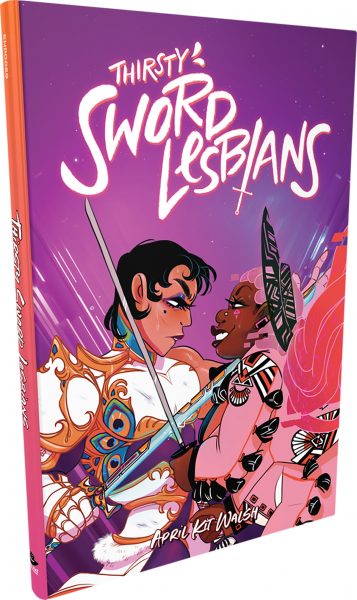
To celebrate queer gaming: Thirsty Sword Lesbians from Labyrinth Games & Puzzles. This roleplaying game embraces lesbian culture by unlocking a world of swords, romance, and battle. Ideal for group settings, the book presents a system of world building and character identities that are best brought to life by creative minds. Labyrinth, which has been a local Washington business for more than 15 years, celebrates non-digital fun through games and puzzles that connect the community. This gift is offered online and at Labyrinth’s Capitol Hill location. ($29.99)
To make a bold statement: The “Resist” T-shirt from Propper Topper. This locally screen-printed black tee features the Washington flag designed within a raised fist, symbolizing both Washington pride, and political resistance. The shirt is made exclusively by Propper Topper, a local Washington business that evolved from a hat shop to a gift store since opening in 1990. The tri-blend unisex shirt is available both for pickup at Propper Topper’s Cathedral Heights location and shipping via the online site. ($32)
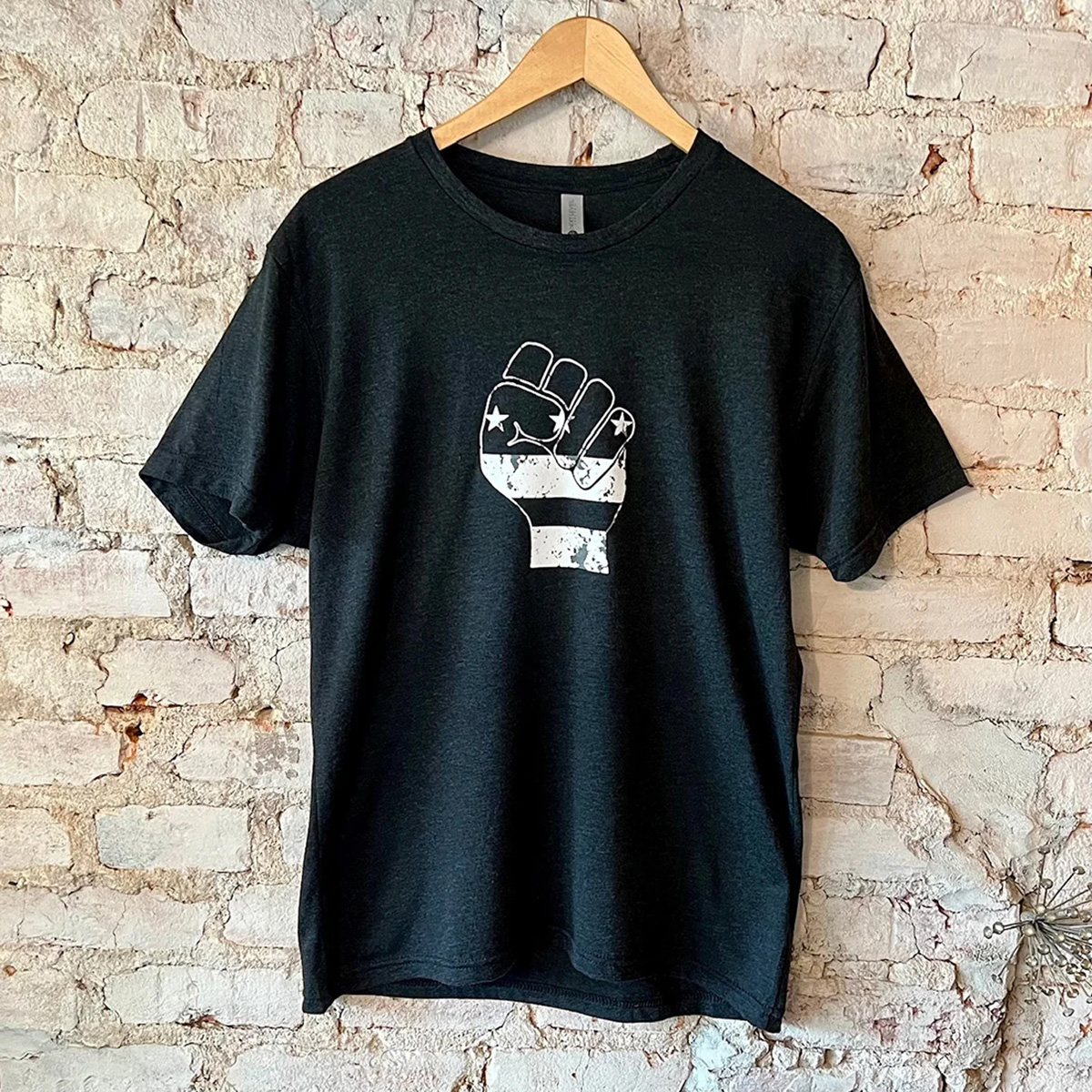
To keep it c(g)lassy: The Glass Ball earrings from Blue Moon Aquarius. Gifting can rarely go wrong when it comes to a new pair of earrings. The unique statement earrings — made of polymer clay, glass, and 18k gold plating over surgical steel — are hand cut, sanded and assembled in Washington, meaning each set is unique. Blue Moon Aquarius, a local brand, is known for its small batch jewelry and home decor designed with clay materials. Available in oxblood, hunter green, lavender, and bluestone color palettes, these earrings are available for purchase on Blue Moon Aquarius’ website and at the DowntownDC Holiday Market. ($48)
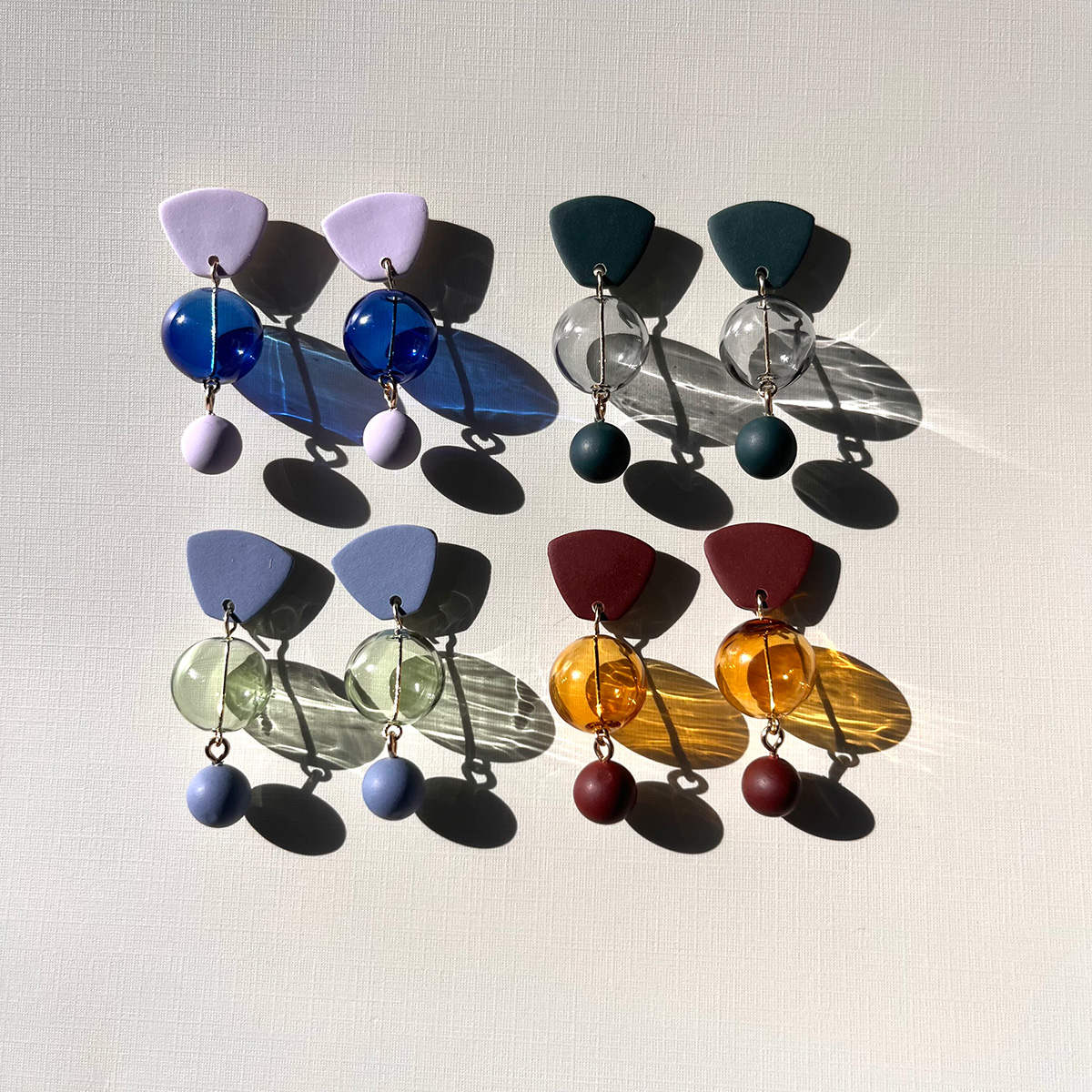
To elevate a holiday tea or charcuterie party: The Honey Flight: Tea Lover’s Selection from BannerBee. This local honey company presents the ideal gift to make cozying up with a cup of tea slightly more special. The Honey Flight contains three types of raw wildflower honey infused with fair trade Ugandan vanilla bean, chai spices, and locally sourced lemon thyme herb. The gift is also an opportunity to uplift a family company based in the Mid-Atlantic that offers all-natural, sustainable products. The flight is available online, at the DowntownDC Holiday Market or at the Arlington Courthouse and Dupont Farmers’ Markets. ($36)

For Baltimore shoppers: If you’re in Charm City, don’t miss Balston Mercantile, opened by a gay couple in June. Their gorgeous shop in the Hampden neighborhood offers an array of unique, upscale finds, from barware and artwork to cookbooks and home decor and more. (849 W. 36th St.)
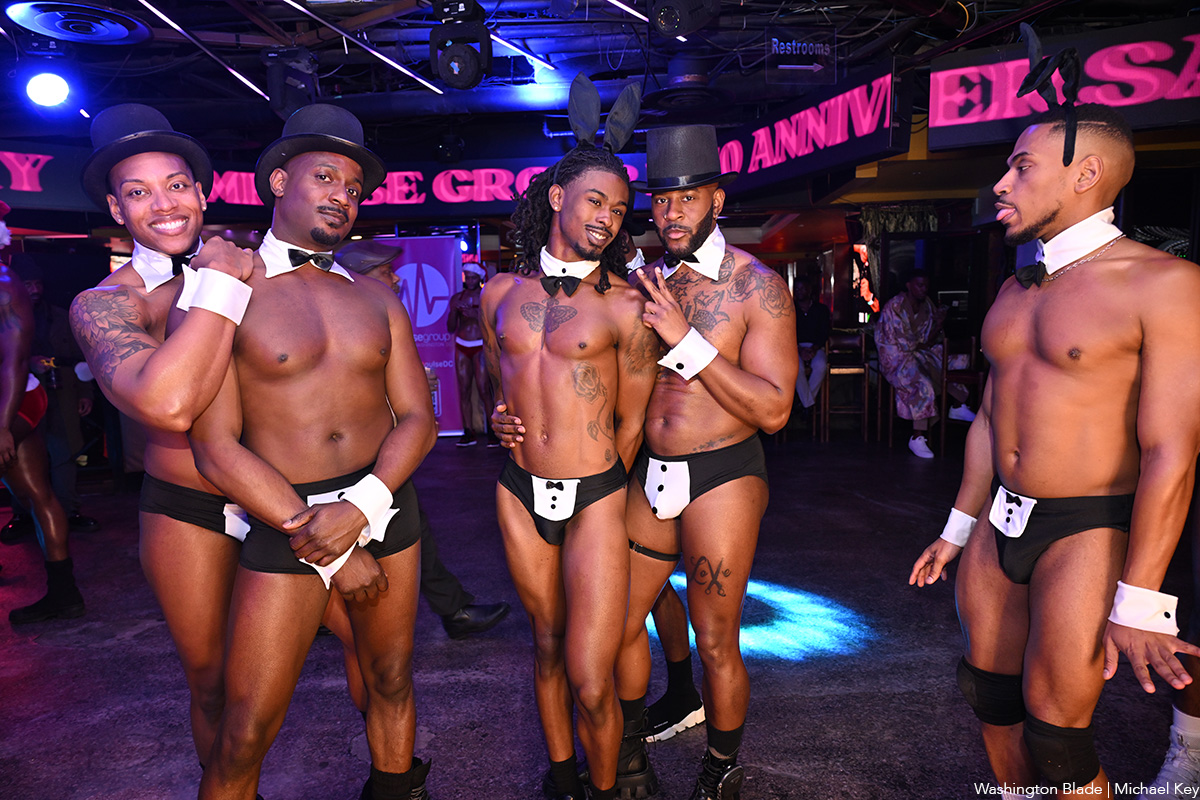
Impulse Group DC held “10’s Across the Board: A Celebration of 10 Years” at Bravo Bravo (1001 Connecticut Ave., N.W.) on Sunday, Dec. 14. Impulse Group DC is a volunteer-led 501(c)(3) and affinity group of AIDS Healthcare Foundation dedicated “to engaging, supporting, and connecting gay men” through culturally relevant health and advocacy work.
(Washington Blade photos by Michael Key)

